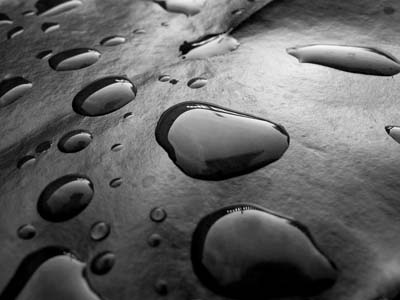
Stepping safely into a shower…
Climbing into a pool…
Walking along the beach…
Many prosthetic components are sensitive to moisture and can corrode prematurely if exposed to water for extended periods of time. What does that mean for the average amputee? Most lower limb amputees must maneuver precariously into showers, crawl into pools, and a trip to the beach is an ordeal. Fortunately, here are some options for lower limb amputees:
The Prosthetic Shower Bag
The most inexpensive way to protect a prosthetic limb from water is to apply a shower bag over the prosthesis, prior to water exposure. This bag slips over the prosthesis and extends beyond the prosthetic trim line: for a below knee amputee, the bag would cover the entire prosthesis and reach up to the user’s thigh. There are several different bag designs, manufactured by several different companies. Most of these bags are not 100% waterproof, as moisture can enter through the top seal of the bag and can reach the prosthetic components inside. Shower bags are normally used for mild moisture exposure, such as walking during a rainy day or taking a stroll along a beach shoreline, and not complete water submersion. Dry Pro does make a waterproof prosthesis cover that incorporates a patented vacuum seal, which reportedly keeps the prosthesis completely dry. The Dry Pro bag is also designed with a non-skid foot bottom, for safer use in the shower.
Advantages:
· Low cost
· The bag works with the amputee’s ‘everyday prosthesis’
Disadvantages:
· Not ideal for prolonged exposure to water
· Not ideal for rigorous water activities
· Not durable
· Significant risk of accidental exposure to water
· Hygiene during showering
Target Users:
· Below knee prosthetic users
· Upper extremity prosthetic users
· Consumers wearing fracture casts
The most noteworthy disadvantage of the bag is that the prosthesis cannot be removed during showering. Ideally, once an amputee is safely in the shower, the prosthesis should be removed so that the residual limb can be cleaned.
Most insurance companies do not cover the cost of a shower bag and cost must be incurred by the user
Utilizing a Previous Prosthesis
Many amputees opt to make an old prosthesis a ‘water prosthesis’ by changing out certain components for more resistant materials, like using stainless steel screws. Some prosthetic feet are more resistant to moisture damage, such as the Seattle foot. Eventually, moisture does make its way into small crevices between plastics, or other materials, and corrosion will gradually occur.
Advantages:
· Reasonably lower in cost that obtaining a new, specialized ‘water prosthesis’
· The prosthesis can be removed during showering
· Is more durable than a shower bag and better for more rigorous activities
· May allow for better ambulation during walking, as the prosthesis was originally designed primarily for this purpose
Disadvantages:
· Will eventually succumb to water exposure
· May no longer function adequately as a ‘back-up prosthesis’
Some insurance companies may replace prosthetic components, such as a foot, depending on benefit guidelines.
Specialized ‘Water Prosthesis’
The most ideal option for prosthetic users would be a prosthesis specifically designed for water activities. In this situation, every component would be chosen based on its resistance to water damage. Everything from socket design to alignment screws would be water resistant. Manufacturers have designed certain prosthetic components specifically for use in the water:
The 802 Nylon Knee, Aulie Devices Inc.
This is a lightweight, durable, nylon knee designed to be rugged and low maintenance. It contains a simple hydraulic control with a push-in manual lock. This knee allows above knee prosthetic users to ambulate with a functional knee during activities involving water, dirt, and even mud. It can be cleaned easily after use and is suitable for all functional levels.
The Activankle or Swimankle, Rampro
These are prosthetic ankle joints designed to be used during activities such as swimming, snow skiing, jet skiing, snowmobiling and rowing.
The Activankle allows for:
· Walking, when locked into walking position
· Unlimited dorsiflexion when unlocked
· Swimming with or without fins
· Flexion in a single axis without rotation or lateral shifting
· Movement without resistance
The Swimankle is similar to the Activankle, however is does not dorsiflex when unlocked and it does not include a protective cover. A protective cover is recommended when exposure to sand or dirt is involved.
Stompers, Stomper Products
Stompers are waterproof, round cups that are ideal for water activities where ambulation is not the primary activity. These round cups fit onto the bottom of the prostheses and are substitutes for standard foot designs.
Socket Designs
Socket designs that incorporate minimal mechanical components, such as a cushion silicone liner with a suspension sleeve, are ideal for ‘water prostheses’. Pin locks tend to retain moisture and corrode over time.
The main advantages of specialized ‘water prostheses’ are:
· The prostheses are specifically designed for water activities and are, therefore, the most suitable option for such activities
The main disadvantages are:
· Expense
· The user must switch prostheses, depending on the activity, and must carry the ‘everday prosthesis’ along
Unfortunately insurance companies sometimes do not consider a ‘water prosthesis’ a medical necessity. A user may be able to justify medical necessity of such a prosthesis if one or more of these factors are evident:
· The prosthesis is primarily required for transferring safely in and out of the shower
· The user is a bilateral lower limb amputee
· There is sufficient physician and practitioner documentation detailing a history of instability during showering
· The user’s amputation was due to a work related accident and prosthetic coverage is covered under a workers’ compensation claim